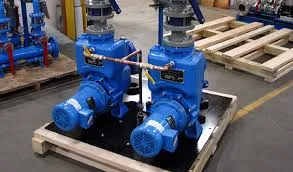Estonian
- Afrikaans
- Albanian
- Amharic
- Arabic
- Armenian
- Azerbaijani
- Basque
- Belarusian
- Bengali
- Bosnian
- Bulgarian
- Catalan
- Cebuano
- Corsican
- Croatian
- Czech
- Danish
- Dutch
- English
- Esperanto
- Estonian
- Finnish
- French
- Frisian
- Galician
- Georgian
- German
- Greek
- Gujarati
- Haitian Creole
- hausa
- hawaiian
- Hebrew
- Hindi
- Miao
- Hungarian
- Icelandic
- igbo
- Indonesian
- irish
- Italian
- Japanese
- Javanese
- Kannada
- kazakh
- Khmer
- Rwandese
- Korean
- Kurdish
- Kyrgyz
- Lao
- Latin
- Latvian
- Lithuanian
- Luxembourgish
- Macedonian
- Malgashi
- Malay
- Malayalam
- Maltese
- Maori
- Marathi
- Mongolian
- Myanmar
- Nepali
- Norwegian
- Norwegian
- Occitan
- Pashto
- Persian
- Polish
- Portuguese
- Punjabi
- Romanian
- Russian
- Samoan
- Scottish Gaelic
- Serbian
- Sesotho
- Shona
- Sindhi
- Sinhala
- Slovak
- Slovenian
- Somali
- Spanish
- Sundanese
- Swahili
- Swedish
- Tagalog
- Tajik
- Tamil
- Tatar
- Telugu
- Thai
- Turkish
- Turkmen
- Ukrainian
- Urdu
- Uighur
- Uzbek
- Vietnamese
- Welsh
- Bantu
- Yiddish
- Yoruba
- Zulu
Telephone: +86 13120555503
Email: frank@cypump.com
nov. . 07, 2024 18:08 Back to list
Sewage Lift Pumps for Effective Wastewater Management and Disposal Solutions
Understanding Sewage Lift Pumps Essential Components for Wastewater Management
Sewage lift pumps play a crucial role in modern wastewater management systems, ensuring efficient transport of sewage and wastewater from lower to higher elevations. This article explores the importance, functioning, and considerations associated with sewage lift pumps.
What is a Sewage Lift Pump?
A sewage lift pump, also known as a wastewater pump or effluent pump, is a type of submersible pump designed specifically to handle the removal of sewage and waste materials from residential, commercial, and industrial properties. These pumps are vital in situations where gravity drainage is not feasible, such as in basements or low-lying areas where wastewater must be elevated to reach a sewer line or treatment facility.
How Sewage Lift Pumps Work
The operation of a sewage lift pump revolves around its ability to lift the wastewater from a lower point to a higher elevation. Typically installed within a lift station or pump chamber, the pump is submerged in the sewage. When the sewage level rises to a predetermined height, float switches activate the pump, which then draws the sewage into a volute casing. The impeller spins, creating centrifugal force that propels the sewage upward through discharge pipes.
These pumps are designed to handle solids and debris commonly found in sewage, such as paper, food particles, and plastic. They come equipped with significantly powerful motors and robust impellers capable of managing challenging waste without clogging.
Applications of Sewage Lift Pumps
Sewage lift pumps are employed in various applications, including
1. Residential Use In homes situated in low-lying areas where gravity flow to sewage systems is not possible, lift pumps are essential. They help transport sewage from basements or lower bathrooms to the main sewer line.
2. Commercial Facilities Restaurants, hotels, and shopping malls often require sewage lift pumps for managing sewage generated in their premises, especially when located below the sewer main.
sewage lift pump

3. Municipal Systems Cities use sewage lift stations equipped with multiple pumps to transport wastewater to treatment plants, ensuring the integrity and efficiency of the sewage system.
4. Industrial Applications Factories and processing plants utilize sewage lift pumps for handling wastewater and ensuring compliance with environmental regulations.
Considerations When Choosing a Sewage Lift Pump
Selecting the right sewage lift pump involves several considerations
- Pump Capacity It’s critical to choose a pump with the appropriate flow rate and head height capacity to handle the volume of sewage that will be produced.
- Type of Solids Depending on the application, the pump must be capable of handling the specific type and size of solids present in the wastewater.
- Durability and Material Pumps made from corrosion-resistant materials are essential for longevity, particularly when dealing with difficult waste conditions.
- Energy Efficiency With growing environmental concerns and energy costs, opting for energy-efficient models can result in significant long-term savings.
- Maintenance Regular inspection and maintenance of sewage lift pumps are necessary to ensure reliable operation. Choosing a pump with accessible components can simplify this process.
Conclusion
Sewage lift pumps are indispensable elements of modern sewage and wastewater management systems. Their ability to elevate waste to treatment facilities and sewer lines makes them crucial in maintaining public health and environmental safety. By understanding their function and the factors involved in selecting the right pump, property owners and managers can ensure effective wastewater management in their facilities. It is essential to consider professional guidance when installing and maintaining sewage lift pumps to maximize their efficiency and service life. As urban areas continue to expand and infrastructure demands grow, the importance of robust sewage lift systems will only increase, making them a focal point in sustainable environmental practices.
-
Reliable Non-Clog Sewage Pumps with GPT-4-Turbo Tech
NewsAug.04,2025
-
High-Performance Air Pumps for Sand & Gravel | Efficient Transport
NewsAug.03,2025
-
ISG Series Vertical Pipeline Pump - Chi Yuan Pumps Co., LTD.|Energy Efficiency, Corrosion Resistance
NewsAug.03,2025
-
ISG Series Pipeline Pump - Chi Yuan Pumps | Energy Efficiency&Compact Design
NewsAug.03,2025
-
ISG Series Vertical Pipeline Pump - Chi Yuan Pumps Co., LTD.|High Efficiency, Low Noise, Durable
NewsAug.02,2025
-
ISG Series Vertical Pipeline Pump - Chi Yuan Pumps | High Efficiency, Low Noise
NewsAug.02,2025










